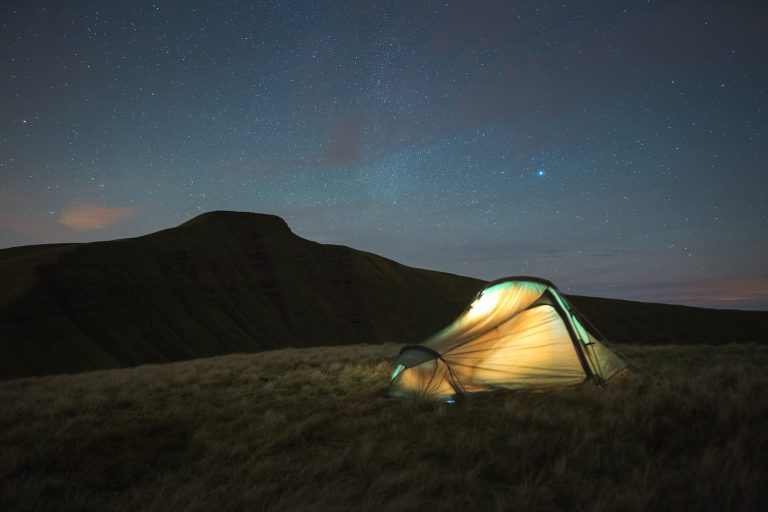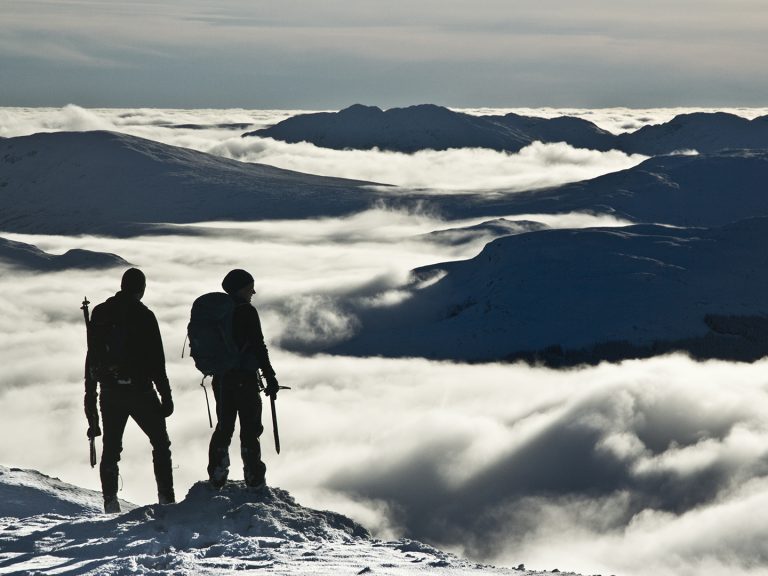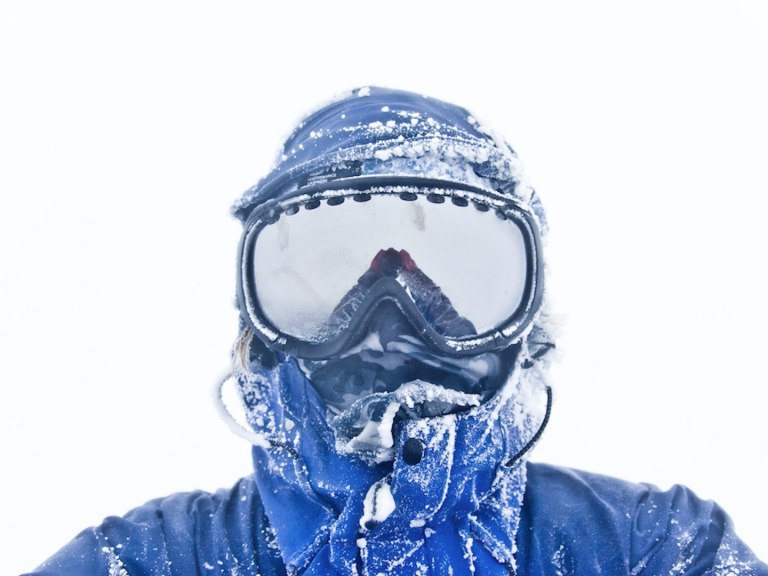“You should never be in the dark with a map in your hand!”
You want to squeeze in an extra multi-pitcher on Gable Crag but it
takes longer than you thought. Someone in your team sprains their ankle
near the summit of Glyder Fawr and you have to snails pace it back to
Ogwen Cottage. At sunset you find your path blocked by fallen rocks and
the alternative route involves a 7km detour…
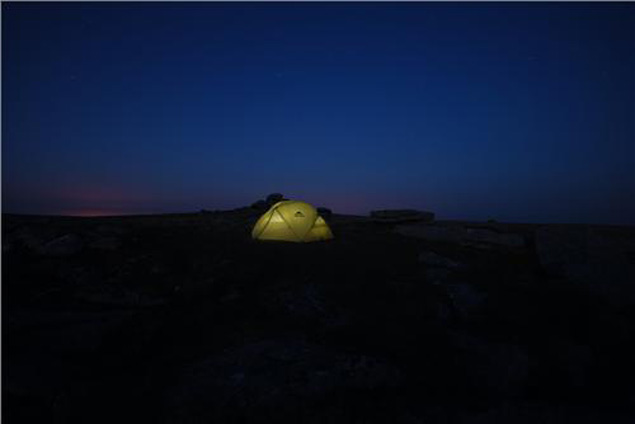
Although good planning and solid daytime navigation are your first
defence against getting caught out after dark, there’s still lots of
reasons why darkness can catch you out while still far from basecamp.
The problem is that darkness and disorientation are two primeval human
fears – throw in bad weather, injuries, or the threat of missing last
orders and it’s easy to see why so many mountaineers find it such a
daunting prospect.
So, how do you get back safely and efficiently when you can’t see past
the end of your torch beam and the shadows are making every contour
feature look like the Hilary step on Everest?
Luck favours the well prepared
Never leave the valley without a reliable headtorch. LED
torches have all but taken over nowadays and it’s not hard to see why.
The night vision friendly blueish light, fantastic reliability, battery
life the Duracell bunny would kill for and halogen comparable
performance all means you really don’t need to look any further.

There are loads of superb torches out there but there are a few key
features to look out for. Models with several light output levels help
conserve battery power and help avoid dazzling you when you’re looking
closely at the map. It’s also useful to have a beam that can be changed
between spot focus to help you pick out distant features and wide-angle
that’s ideal for illuminating the ground in front of you as you walk.
Good weather resistance is also important for our ‘interesting’ climate
and make sure the head attachment system is secure so it doesn’t keep
toppling off your head.
One thing that many torches seem to suffer from is fiddly control
buttons that are hard to use with cold fingers or when you have gloves
on. Take your Everest thickness mitts along and check the buttons out
in the shop – you may get some strange looks but you won’t regret it
when you’re descending An Teallach in the early hours and need to
quickly flick on your spot beam to see what lies ahead!
Having discussed torches it’s worth mentioning that navigators are
often very quick to flick their torch on at the first sniff of
darkness. Sometimes you can travel safely using moonlight instead and
it’s even better if there’s good snow cover too. Remember that once you
start using your torch you’re pretty much committed because your night
vision takes a long time to readjust if you turn it off again.
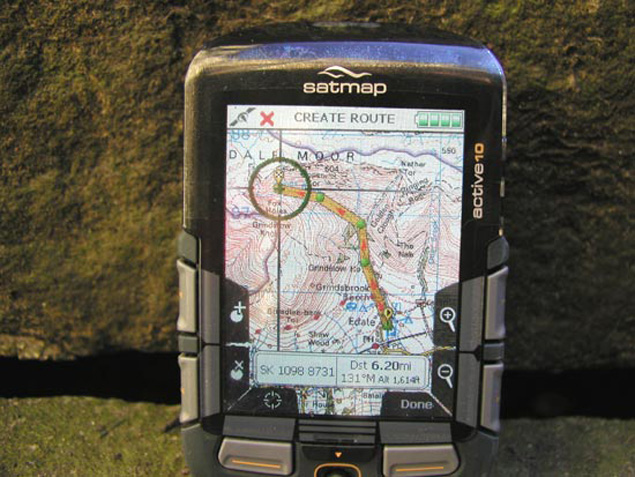
In terms of other equipment it helps if your compass has some of those
little luminous markers on and choose a watch with clear digits and a
stopwatch for timing distance. I also find an altimeter particularly
useful at night as it can help determine your position on features like
ridges and gently undulating featureless terrain. I
I’ve also often used a GPS when practising navigation as it can help to
confirm you have got where you want to go and also allows you to
relocate if you do find yourself ‘temporarily misplaced’ (also known as
lost!). I always replace the batteries in my torch and GPS before each
night navigation session and take a spare torch and batteries as well.
Don’t forget your extra map and compass, spare clothes and plenty of
food and drink too.
If you laminate map sections or use a map case try to find coverings
with a matt finish because some of the shiny plastic types really
bounce the light back. You can also reduce this effect slightly by
shining your torch onto the map from the side if it’s causing problems.
Remember to keep your torch away from your compass if you are holding
it in your hand though!
Practice makes perfect
I’m sure I’d be right in thinking you became proficient at daytime
navigation by practicing. Well, of course, that’s also the trick with
the night time version too. The problem is it takes a lot of motivation
to head out when you are missing East Enders or just got back from a
long day at work.
An easy way to get quality practice time in without the worry of having
to spend a night out is to go out a few hours before sunrise. That way
if you do get lost you can just wait for daylight to arrive. This also
means you can fit your night navigation practice into a longer walk.
For your initial forays choose an area with plenty of interesting
features to navigate between and a good relocation feature like a road
in case things go pear shaped. Once you are completely comfortable in
this sort of terrain you can up the ante and try more challenging
areas. It’s also worth choosing nights with good weather so you don’t
have too much to deal with at once.
It’s essential to carefully plan your route in advance and mark the
features onto your map with a marker pen. To do this effectively you
need to be sure you understand the way features are represented on the
map. How steep is that slope going to be? Will you end up at the top of
that cliff or standing at the bottom of that outcrop instead? Go with
someone else and don’t forget to leave a route plan with someone too.
Time goes by…so slowly
Madonna sang about it but I doubt she’s ever night navved across
Bleaklow! Most people feel time passes quicker than it actually does
when they’re estimating elapsed time at night. Trust your stopwatch and
don’t be tempted to ignore the information it’s providing. The more you
practice the less this will be an issue.
It’s also common to think you have travelled further than you have when
you are measuring distance by pacing. Practice will again allow you to
work out if your night paces are covering the same distance as your day
paces. Remember that pace length will also be affected by snowy
conditions and some terrain – try a night crossing of Kinder Plateau
after heavy rain and you’ll know what I mean!
While we’re talking about time I always consciously slow down my
decision making and double check all my calculations at night. I figure
the few extra minutes it takes is preferable to having to relocate
because I’ve rushed into a bad choice. It’s worth always getting your
partner to make their own calculations and compare the results too.
Inch by inch it’s a cinch, yard by yard its hard
I once sat in a motivational talk given, very bizarrely, by one of the
Power Rangers. One of the things he pointed out was that breaking
challenges down into small steps helps you to achieve your goals. Never
has that advice been more relevant than when navigating at night.
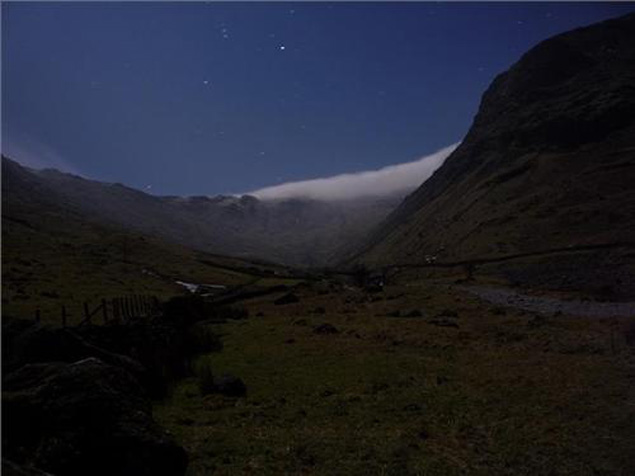
Two of your key night nav techniques are walking on compass bearings
and distance measurement (by timing or pacing). These techniques are
very accurate but they are also prone to error if you walk too far, not
far enough, or stray from your bearing. The best way to minimise the
risk of this happening is to break each navigational leg into smaller
sections than you would attempt in daylight. If you also use obvious
features to aim for you should still be able to work out where you
wanted to be even if you’ve gone a bit astray.
It’s also worth thinking of each navigational leg as a journey.
As you plan it on the map you can then identify individual features you
will ‘tick off’ on the way; the stream after 50 metres then the rocky
outcrop after 150 metres. Tick off features give you the confidence
that you are on track but also allow you to quickly address the problem
if the features you encounter doesn’t match your journey plan.
I followed a 176 for 150 then handrailed the wall to the attack point…
If you listen to a bunch of orienteers recounting their event you could
easily be mistaken for thinking you are listening to a different
language – they love jargon! But, once you actually fathom out the
terms they are using you’ll see they refer to navigational techniques
you already use all the time…
I use ‘attack points’ a lot at night. They are especially useful when
you are breaking a journey into small sections as mentioned earlier
(even though you may end up walking a bit further). Say the target you
want to find is 100 metres to the side of the end of the tarn you are
standing next too. Rather than take a long compass bearing directly to
it, you could walk around the edge of the tarn then use the bottom of
it as an attack point to the target. This makes it far more likely you
will get to the point you want whilst also allowing you to easily
retrace your steps if you don’t find it.
‘Handrails’ are linear features that can be especially useful at night.
They can be things like landscape features, streams, roads or walls and
are usually easily identifiable on your map and the ground. However, at
night it is essential that you use some handrails with great care as
they can follow dangerous terrain that you can’t see with your
headtorch. For example, streams that drop down steep gullies or ridge
lines with steep slopes on either side.
Try to choose features that also have a ‘catching feature’ beyond; I’ll
head for that stream junction but if I go too far I will come to the
wall 50 metres beyond. Similarly, a ‘gathering feature’ is two linear
features that join and can provide useful confirmation of your
location; I’ll follow the stream (linear feature) until I get to the
stream junction (gathering feature). Even better if you also have a
catching feature incase you go too far.
‘Aiming off’ is a useful way to avoid compass bearing deviations
turning into a major problem. For example, rather than trying to take a
compass bearing straight to that key wall junction, aim off by taking
the bearing straight to the wall right of the junction. Then once you
meet the wall you will know you just need to turn left and follow the
wall along.
In daytime you probably travel on your compass bearing by sighting
along your line of travel and picking terrain features to head for.
This is a great way to ensure you don’t stray from your bearing. You
can use the same method at night even though you won’t be able to use
features so far ahead; that tuft of grass at 50 metres then that small
rock after 30 metres etc. If the terrain is completely featureless you
can send your partner in front and sight on them – just make sure you
don’t lose each other!
Don’t panic!
Everyone gets temporarily misplaced sometimes – its how you deal with
it that really matters! The priority is to keep calm. It’s easy to
start panicking but there’s no more reason to be nervous at night than
there is in daylight. After all, the same things are there!
The strategies available to you are the same as those you’d use in
daylight although depending where you are you may even have the
advantage of spotting some car headlights or house lights in the
distance. Stop for a few minutes, study your map and the features
around you and make a plan. Having a drink and some food will also
provide a bit of comfort and feed your brain cells. Then, when you’re
ready, put your plan into action and see how it goes. If it doesn’t get
you where you want to go just make a new plan.
There really is nothing to fear about navigating at night. Infact it’s
a very liberating experience and you’ll feel a real buzz when you can
get around the hills safely and confidently in the dark. The other
advantage is you’ll almost certainly get the mountains to yourself! If
you want some extra input you can always book on a navigation course
although before you book it’s worth checking that a night navigation
element is included. If you can’t find a course that fits the bill most
instructors will be happy to run a session for you.
About the author
Paul Lewis is is the owner of Peak Mountaineering
and a Mountaineering Instructor. Peak Mountaineering offers a full range
of winter courses and full details can be found at
www.peakmountaineering.com.
Here’s his comprehensive take on crampon
selection, use, maintenance and more.

